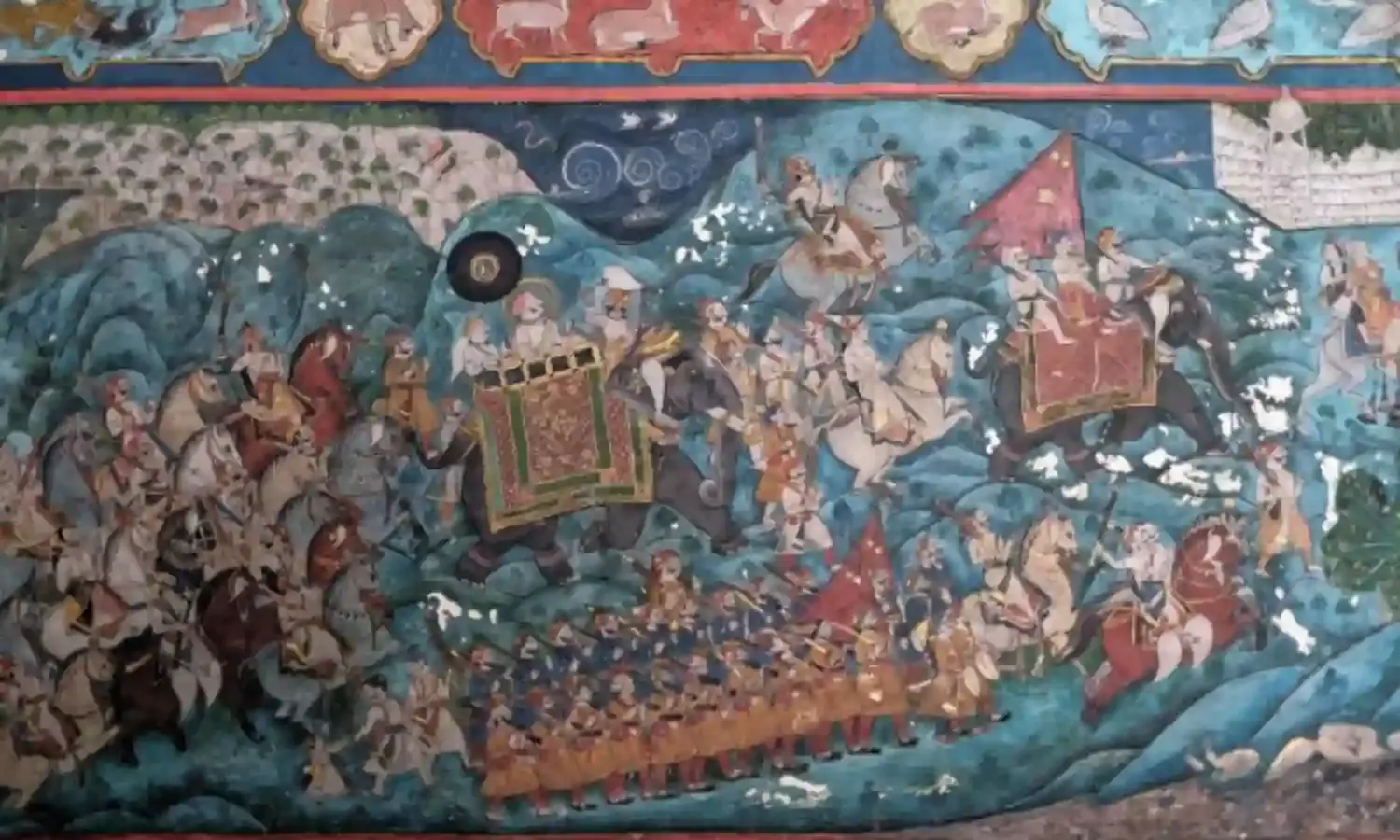Chronicling Colours of Devotion
Anita Bharat Shah’s book on legendary painting and textiles

‘Colours of Devotion: The Legendary Paintings and Textiles of the Vallabha Sampradaya 1500-1900’ by Anita Bharat Shah is filled with illustrations of magnificent art inspired by religious devotion.
At the peak of the Bhakti movement in the 16th Century, Varanasi born Shri Vallabhacharya gave birth to the order of the Pushti Marg out of his devotion to Krishna. Some Pushti Marg followers ended up creating art that transcends boundaries of space and time.
The philosophy of love and inclusiveness of the Pushti Marg helped to amalgamate the arts and crafts intrinsically with worship. The genius of Vallabhacharya lay in the transformation of mundane activities into an aesthetic pursuit.
He encouraged the arts and crafts to become a part of daily life. The way of worship as practised by Vallabacharya was immensely aesthetic and emotionally intense in nature.
After his death, Vallabhacharya’s older son Gopinath succeeded him as leader of the Pushti Marg, followed by his younger son Vithalnathji in 1563. Vithalnathjii was a poet, artist and musician.
On his travels around the country, Vithalnathji had met Man Singh I, the Raja of Amber who became his disciple. Mansingh was one of the nine jewels at Mughal Emperor Akbar’s court.
These were good times when multicultural encounters were used to give a poetic touch to different aspects of art. When Vithalnathji was introduced to Akbar he impressed the Mughal Emperor with his wit and charismatic personality.
Akbar heard that Vithalnathji wanted to live near Shrinathji, the Krishna shrine on the banks of the River Yamuna in Vrindavan. Akbar gave him tax free land in Gokul through an imperial proclamation in 1577. The Emperor held Vishalnathji in great esteem and patronised the Pushti Marg.
Akbar was even allowed into the sanctum sanctorum for a darshan of the precious Krishna image. The diamond on the chin of the image known as ‘chibuk’ was personally offered by Akbar.
The author writes that Akbar was a shrewd administrator, and he realised the political importance of patronising the Pushti Marg order, owing to its growing popularity and its potential to bring in revenue through religious pilgrimage.
Vithalnathji’s relationship with Akbar and his courtiers was extremely pleasant. Birbal Tansen Raja Todar Mal, and Raja Udai Singh Rathore of Jodhpur all courtiers of Akbar were followers of the Pushti Marg.
Vithalnathji’s life had inspired his descendants as well to maintain an amicable relationship with contemporary Mughal rulers. The result was that many Persian aesthetics had seeped into the rituals of the Pushti Marg devotees, but no one had complained.
With the dawn of the Mughal School of painting in the second half of the 16th Century considerable transformations were actualised that influenced the paintings produced for the Goswamis and patrons of the sect close to the Mughal court. Vithalnathji even incorporated the Mughal dress into the wardrobe of Krishna, dressing the image in a turban and ‘chakdaarjama’, the long coat with slits.
The Pushti Marg order was clearly influenced by Mughal aesthetics, especially in the area of textiles made in the large studio of painters, gilders, calligraphers, book binders and librarians.
Akbar had patronised book production and this had attracted artists to the royal studio from local and distant regions. The artists brought with them the cultural wealth of their own artistic traditions and were further trained in the Persian style at the Mughal studio which was initially developed during the reign of Humayun.
The fascinating feature of this cultural encounter resulted in the creation of a distinct style of art due to the synthesis of Indian provincial styles with the Persian court style. By patronising the arts, Akbar had provided great impetus to the blossoming of aesthetics that encouraged harmony amongst citizens.
Rajput painting flourished during this time as Rajput kings set up their own painting ateliers providing artists with ample space to develop their art. The art history of the Mughal and Rajput courts is intrinsically linked. Akbar encouraged his nobles to commission illustrated manuscripts of the Ramayana and Mahabharat.
When Jahangir succeeded to the throne in 1605 he continued to practice the aesthetic diplomacy of his father. The Manley Ragamala paintings are based on a garland of ragas and named after its last European owner. The paintings from 1610 are an example of a happy marriage between the Mughal and Rajput styles.
Akbar’s grandson Shah Jahan was preoccupied more with architecture and he had further reduced the number of artists in the imperial atelier. The patronage of the Mughal rulers had helped the Pushti Marg to broaden its base and influence common people as well as the rich nobles and merchants.
This cordial relationship continued till the reign of Aurangzeb when there was a steep fall in the patronage of the arts. Many artists then left the Mughal court and found new patrons amongst the Rajput royalty.
Royalty was happy to commission illustrated manuscripts that immortalised Bhakti literature. Many Rajasthani rulers, nobles and merchants became devout followers of the Pushti Marg and commissioned paintings. This way the visual arts acquired economic and social value.
The informative text in the 380-page book is accompanied with a visual feast of photographs of poetry and textiles, and paintings inspired by the Pushti Marg’s idea of Krishna as imagined by Vallabhacharyaji in the 16th Century.
Colours of Devotion: The Legendary Paintings and Textiles of the Vallabha Sampradaya 1500-1900
Author Anita Bharat Shah
Published by Niyogi Books, 2023



